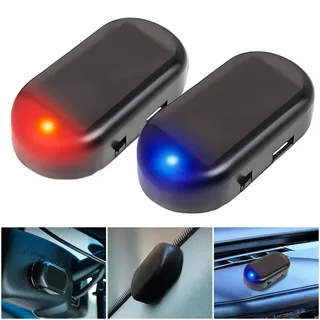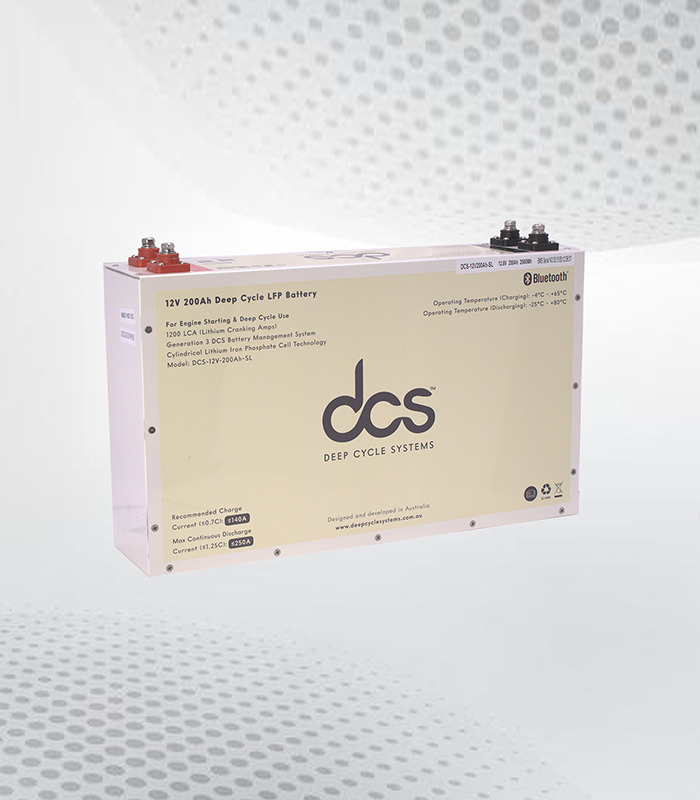Picture this: you park your car, and with a swift flick of a button, a blaring alarm and flashing lights scream, “Stay away!” You walk away feeling like an invisible fortress protects your vehicle. But what if that fortress isn’t as impenetrable as it seems? Enter the world of the car fake security light—a clever deceiver in automotive safety. These little gadgets promise peace of mind but often deliver nothing more than flashy deceit. As thieves become increasingly savvy, understanding these illusions becomes crucial for every car owner. Get ready to uncover what’s lurking beneath that shiny exterior!
What is a Fake Security Light?
Picture a car parked under a flickering streetlight. The shadows dance around, but one thing shines bright: the car’s security light. A fake security light is essentially an artificial deterrent designed to give the illusion of protection against theft.
These devices are often little more than LED lights embedded within your vehicle or installed as aftermarket accessories. They’re usually programmed to activate at random intervals or when triggered by motion, mimicking the glow of a genuine security system.
The idea is simple – if potential thieves see this glowing beacon, they might think twice before targeting that particular vehicle. After all, who risks their neck for something that appears closely guarded?
However, many drivers may not realise these lights don’t provide security features like alarms or tracking systems. Instead, they rely on visual deception to scare off would-be burglars.
While they can add flair and perhaps even some peace of mind while you sleep at night, it’s crucial to understand just how much “protection” these lights truly offer in an ever-changing landscape of automotive safety.
Key Features of the Fake Security Light
fake security lights are crafted to mimic the look of genuine alarm systems, giving you an extra layer of confidence while parked. One standout feature is their flashing LED bulbs that create a visual deterrent against potential thieves. The rhythmic blinking can trick even the most experienced criminals into thinking twice before targeting your vehicle.
Another notable aspect is the ease of installation. Most models come with simple adhesive backing or basic wiring, allowing you to set them up in minutes without specialised tools. This accessibility means anyone can effortlessly enhance their car’s perceived security.
Durability plays a crucial role, too. Many fake security lights are designed to withstand various weather conditions, from blistering sun to pouring rain. Investing in a robust model ensures it remains functional for years without fading away or breaking down.
Some versions offer versatility with settings that allow users to adjust flash patterns and durations, tailoring the display according to personal preference. This customisation adds another level of intrigue.
These lights often include low-power consumption features that help preserve your car battery life while maintaining an impressive appearance when activated.
How to Maintain Your Fake Security Light for Maximum Lifespan?
Maintaining your fake security light is essential to keep it shining bright and functioning correctly. Start by regularly checking the power source. A weak battery can lead to dim or flickering lights, giving away their true nature as mere illusions.
Next, inspect the wiring and connections for any wear or damage. Loose wires can disrupt performance, while frayed connections could spell trouble down the line. Keeping everything snug ensures your light remains a reliable companion on dark streets.
Cleaning is also vital in this maintenance routine. Dust and grime can accumulate over time, dulling the brightness of your light. Use a soft cloth and mild cleaner to gently wipe away any buildup without causing scratches.
If you park outdoors often, consider investing in protective covers. These shields safeguard against weather elements that may cause premature deterioration of components.
If you’re unsure about its condition, schedule periodic check-ups with a professional. Regular assessments will help pinpoint issues early on, keeping your illusion alive for years to come!
How to Diagnose Fake Car Security Light Problems?
Diagnosing issues with your Fake Car Security Light can be simpler than you might think. Start by paying attention to the patterns of illumination. A flickering or erratic glow could indicate a malfunction, while complete darkness may suggest a blown bulb.
Next, check the wiring connections around the light fixture. Loose or frayed wires can cause unreliable performance. Sometimes, it’s as simple as reseating connectors or tightening screws that have come loose over time.
Consider environmental factors, too. Extreme temperatures and moisture can impact functionality. If you’ve parked under heavy rain or in intense heat, these conditions could affect your light’s reliability.
Consult your vehicle’s manual for specific troubleshooting tips related to your make and model. Manufacturers often provide insights into known issues that could help you pinpoint the problem faster.
If you’re still scratching your head after all this detective work, it may be time to call in an expert. A trusted mechanic will have the tools and knowledge to diagnose more complex electrical problems affecting your fake security light.
How to Perform a Quick Inspection of Your Fake Security Light?
Performing a quick inspection of your fake security light doesn’t have to be daunting. Start by giving it a good visual once-over. Check for any signs of wear, such as cracks or discolouration in the casing. These imperfections can impact its effectiveness.
Next, turn on your ignition and observe the light closely. Does it flicker? A steady glow indicates all is well, while erratic behaviour could signal an underlying issue that needs attention. Pay close attention to how bright the light shines; dimness can indicate a failing bulb.
Don’t forget about wiring! Inspect the connections around your fake security light for frayed wires or corrosion. Loose connections might lead to intermittent operation, which isn’t ideal when you want peace of mind.
Grab a multimeter and check voltage levels at the light’s terminals if you’re feeling tech-savvy. This simple test helps determine whether power flows correctly without complex tools or extensive knowledge.
Note any irregularities you discover during this quick inspection. Tracking these details over time will help you identify patterns that may require professional assistance later.
How Long Does It Take to Replace a Fake Security Light?
Replacing a fake security light doesn’t have to be daunting. It’s often quicker than you might think. For most vehicles, the process can take anywhere from 30 minutes to just over an hour, depending on your experience and the make of your car.
If you’re familiar with basic automotive repairs, it should be relatively straightforward. The first step is removing any panels or covers obstructing access to the light. This part may require some patience but shouldn’t cause too much hassle.
Next comes disconnecting the old unit and installing the new one. Most replacements snap into place or involve minimal wiring adjustments—nothing overly complicated! But it’s wise to consult a professional if you’re unsure about dealing with electrical connections.
Remember to test your new security light before putting everything back together! You want to ensure it’s functioning correctly because nothing’s worse than realising there’s still an issue after all that effort.
With some preparation and the right tools, swapping out that fake security light can become another quick DIY project in your car care repertoire!
Installing a New Fake Security Light
Installing a new fake security light can feel like adding a touch of flair to your vehicle. It’s not just about aesthetics; it’s also about creating an illusion of safety that can deter potential thieves.
Start by choosing the right light for your vehicle. Various options are available, from blinking LED lights to those that mimic alarms. Make sure it matches the style and colour of your car for a seamless look.
Next, gather your tools—a screwdriver, electrical tape, and perhaps some zip ties to secure any loose wiring. If you’re not handy with electronics, don’t worry; this isn’t rocket science!
Once you have everything ready, find the perfect spot for installation. The dashboard or rear window often works best. Attach the light securely using screws or adhesive mounts as needed.
Connect the wiring according to the manufacturer’s instructions and test it out! If all is well, a quick flicker should do the trick. Your car will now flaunt its new accessory while giving you peace of mind on those late-night drives home.
Conclusion
Car fake security light may seem clever to deter potential thieves, but they often provide more illusion than actual protection. While these devices can add an extra layer of visibility, relying solely on them is risky. Actual safety comes from understanding your vehicle’s vulnerabilities and taking proactive measures. Many drivers install these lights, thinking they enhance their car’s defences. However, the reality is that savvy criminals can see through this facade. A well-placed light might catch the eye but doesn’t replace effective anti-theft systems or safe parking practices.
FAQS
What exactly does a car fake security light do?
The Car fake security light mimics the appearance of an active alarm system but doesn’t offer absolute protection against theft or break-ins.
Is installing one worth it?
While they can deter potential thieves due to their outward appearance, they should not be relied upon as your only line of defence.
How long do these lights typically last?
Most Fake security lights have a lifespan similar to standard LED bulbs—usually around 5-10 years, depending on usage and environmental conditions.
Can I install one myself?
Yes! Many models are designed for easy DIY installation. Just follow the manufacturer’s instructions carefully.
What should I look for if my fake security light fails?
Check connections first; loose wiring is often the culprit. If everything seems adequately connected and won’t work, consider replacing it with a new unit.
| Related Business Listings |
| Contact Directory |
| Local Business Profiles |




